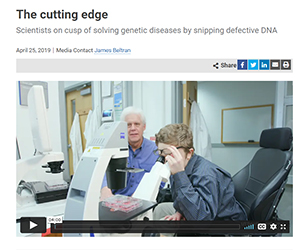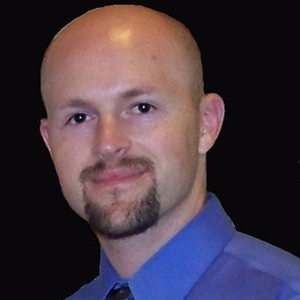
“The Cutting Edge: Scientists on cusp of genetic diseases by snipping defective DNA” by James Beltran
UT Southwestern Medical Center
Our goal was to produce a compelling news release package to spotlight UT Southwestern’s promising work on developing a gene editing treatment for Duchenne muscular dystrophy. Using CRISPR, Dr. Eric Olson developed a therapy that halted progression of the muscle-withering disease in animals and launched a clinical trial. We coordinated various interviews and video shoots with Dr. Olson and Ben Dupree, a DMD patient, including visits to Ben’s home and Dr. Olson’s lab. Family photos, scientific animations, and video footage were incorporated to create a multimedia package that would attract the attention of various media.
“Mrs. Dupree, who had not heard of Duchenne before her son showed signs of the disease, was dismayed to learn of the lack of immediate options for DMD patients. Yet hope remained. Scientists had known for decades that DMD is caused by a defect in any of...”

What was the most impactful part of your award-winning entry?
The news release package illustrated -- through words, video, photos and animations – the intersection of science with one person’s determination to overcome life’s challenges.
What is one thing you learned from this experience?
It is striking to see the bond scientists form with patients while researching a disease. While some may choose to avoid such emotional investment, others seek such bonds to understand firsthand how much is at stake.
What challenge did you overcome?
The biggest challenge was blending the personal story of one Duchenne patient with a lay-friendly explanation of the disease and the research scientists hope will one day halt its progression.
What was the biggest challenge in writing about this topic?
The biggest challenge was blending the personal story of a Duchenne patient with a lay-friendly explanation of the disease and the research that scientists hope will one day halt its progression.
Contact
Steve Kaskovich, stephan.kaskovich@utsouthwestern.edu